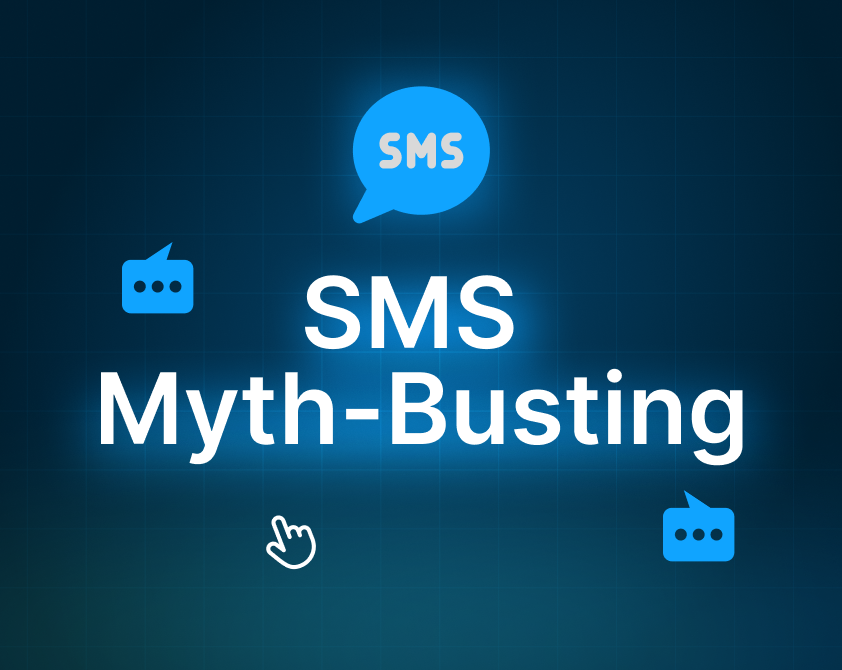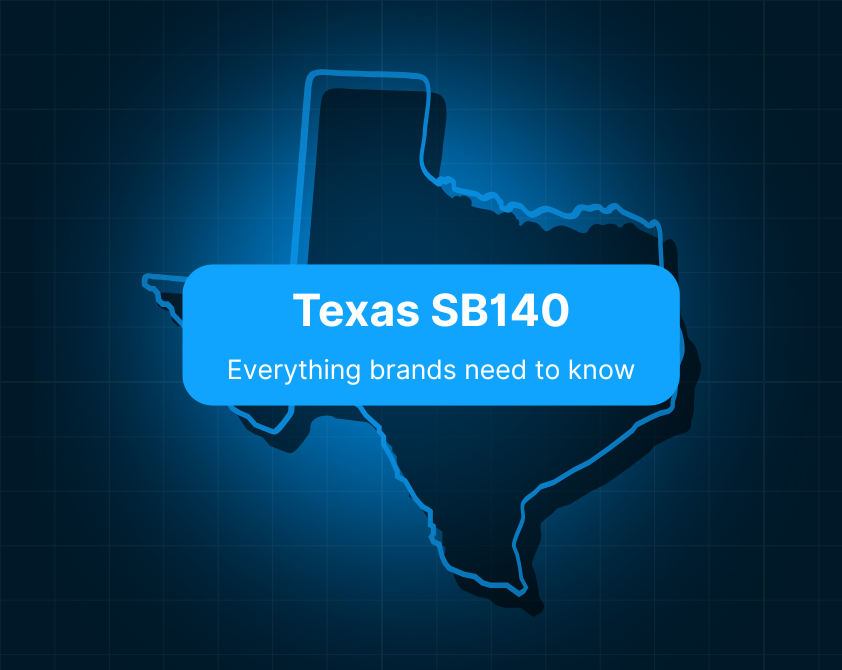SMS Myth-Busting: Unlocking Growth from Overlooked Demographics
Marketers have long believed that mature, luxury, and desktop shoppers aren't as receptive to text marketing.
But recent data shows that the desire to connect via SMS is strong across all demographics. Gen X now leads SMS sign-ups at 85%, and baby boomers are willing to follow up to six brands by text (double their current count).
So what's actually holding brands back from tapping into this demand?
By overlooking certain audiences, brands tend not to prioritize the full SMS journey — missing opportunities to design motivating offers or build programs that spark ongoing engagement. And if they simply tack on a clunky post-purchase opt-in to "check the box," even interested shoppers hesitate.
As a result, brands miss out on meaningful customer relationships — and the revenue that comes with them.
That's why we're walking through the 2025 SMS demographic benchmarks, the revenue brands lose by falsely counting out these shoppers, and the playbook for turning overlooked segments into high-value subscribers.
SMS Adoption: Who's Opting In?
Over the past four years, texting has gone from a nice‑to‑have touchpoint to a mainstream marketing channel. As of this year, 84% of U.S. consumers are opted in to brand texts — up 35% since 2021.
The upward trend is obvious. Let's take a closer look at who's driving it.
- Age: Texting isn't limited to digital natives, with opt‑in rates at 85% for Gen Z, 78% for millennials, and 81% for Gen X.
- Gender: Women are slightly more receptive to SMS marketing, opting in at a rate of 88% compared to 78% for men.
- Industry: Consumers are most likely to subscribe to texts from e‑commerce/retail (48%), healthcare (36%), and finance (24%).
With 52% of subscribers receiving texts from four or more brands, it's clear that consumers are comfortable with multiple brand conversations, as long as the communication remains thoughtful and respectful.
If the SMS adoption gaps aren't actually as stark as marketers assume they are, why are they still convinced certain segments are unreachable?
Rethinking Opt-In Roadblocks
Despite the progress in SMS adoption, many brands are still guided by old habits and assumptions.
Marketers often think older shoppers, who historically favor desktops for purchases, won't bother with mobile — especially when it comes to marketing. Senior or high‑income buyers are widely considered to be more privacy-conscious and reluctant to share personal data (such as their phone number). Meanwhile, premium and heritage retailers have an added layer: the fear that SMS could feel too informal and chip away at a carefully curated brand image.
But standout brands prove these obstacles are more myth than reality. Take APL, a luxury-performance sneaker brand. APL wanted SMS to feel like a personal concierge, but feared it might cheapen their image. Ultimately, the quality of marketing execution made all the difference.
By crafting photo‑rich MMS and replying one‑to‑one, they turned the channel into a high‑touch experience:
- 78x ROI for their SMS program
- 32% average CVR
- 25% of SMS subscribers made 3+ purchases
So why aren't more brands seeing the same success? The real culprit is consent friction.
How Compliance Complexity Turns Shoppers Away
Data privacy regulations are getting stricter, from the federal TCPA to a growing patchwork of state‑level statutes — like Texas SB140, which will extend private right‑of‑action penalties to marketing texts.
This is forcing brands to add more guardrails. Think extra checkboxes, long legal disclosures, and multi-step confirmations. The aim was to protect shopper data — the side effect was abandonment.
Many buyers, especially those already wary of sharing personal information, see a wall of legal text and simply skip the signup entirely. Legacy opt-in methods interrupt the buying journey or arrive at the worst moments. Take the traditional "Reply Y" confirmation after checkout. It shows up after the browser tab is closed or when the phone is out of reach, so desktop users feel done, and mobile users are on to something else. The result is opt-in rates at a fraction of their potential.
The Hidden Cost of SMS Skepticism
Every one of those missed opt‑ins is revenue left on the table. Once brands quantify those lost sign‑ups, fixing opt‑in flows jumps to the top of the priority list.
As an example, let's take a store that ships 10,000 unique orders a month. Average SMS opt-in rates hover around 0.5%, meaning they would get roughly 50 new SMS subscribers a month.
With an updated, properly executed consent collection strategy, benchmarks show a 10% opt-in rate is realistic — meaning they would get 1,000 SMS subscribers from the same number of sales.
To add dollar amounts, we'll use Klaviyo's 2025 SMS campaign benchmarks to add dollar amounts. It puts "Good" revenue-per-recipient between $0.66 and $2.41. Let's pick the midpoint ($1.50) to keep the calculation conservative.
- 950 additional subscribers × $1.50 = $1,425 in incremental revenue per send
- Two sends a month (a light cadence) = $2,850 left on the table every 30 days
Over a year, the missed revenue opportunity exceeds $34,000 (before factoring in repeat-purchase lifts and higher lifetime value from purchase-proven contacts).
Here's a step-by-step guide to calculate your brand's hidden revenue opportunity, with benchmarks and self-audit tips.
But the hit isn't just top-line. Weak opt-in practices erode list quality, force reliance on retargeting ads, and limit the ability to gather zero- and first-party data, making segmentation and downstream personalization less effective. Poor consent collection also increases unsubscribes and damages sender reputation, compounding the issue over time.
Transform Checkout Into an Opt-In Engine with Dynamic Consent
Brands' clearest opportunity for SMS growth is at the point of highest customer trust: checkout. But for most Shopify stores, that's still an overlooked opportunity that turns away subscribers before they even make it onto their list.
How Dataships Streamlines Consent at Checkout
Dataships is a dynamic consent solution built to help Shopify brands capture more SMS (and email) opt-ins during the checkout flow — no extra clicks, pop-ups, or complicated follow-up required. With a single compliant consent step embedded in the order review page, Dataships makes it effortless for shoppers to subscribe when their trust and interest are highest.
Dataships' dynamic consent engine detects each customer's location and automatically applies the right legal disclosures for that region. Shoppers can opt in with a single click, and SMS verification (when required) happens instantly, all within the checkout window. There are no interruptions or "Reply Y" post-purchase texts.
Behind the scenes, Dataships updates compliance rules daily, keeps audit-ready logs, and offers indemnity insurance to shield brands from regulatory risk. The experience is fast and seamless without disrupting the customer journey.
Real-World Impact: Brands That Made the Switch
When brands implement Dataships' dynamic consent, they see results almost immediately, and often across demographics they might have once considered out of reach:
- Denver Modern, a luxury furniture retailer, worried that its older, desktop-first audience wouldn't be open to text marketing and that SMS compliance would be a headache. After replacing Shopify's default checkboxes and post-purchase consent texts with Dataships, SMS opt-ins jumped from 0.36% to 12% (a 33x lift), driving more than $2 million in repeat-purchase revenue and adding $264 in customer lifetime value per new contact.
- IQBAR, a functional-nutrition brand, was once skeptical that higher-income, health-conscious shoppers would be open to brand texts. After implementing Dataships, their SMS opt-ins rose 17x, email opt-ins reached 96%, and 19,000 new subscribers drove more than 6,000 repeat purchases — a 491% ROI within a single year.
The main barrier to SMS marketing success isn't your audience, it's friction. Removing those roadblocks with Dataships unlocks untapped growth for any segment.
Your 30-Day Dataships Testing Plan
Dataships makes it easy to test dynamic consent against your existing flow — no need for a rebuild or disruption.
Here's how to get started:
- Install Dataships in minutes by enabling the Shopify app or adding a single line of code and toggling "SMS Easy Opt-in" — the dynamic consent box appears right on your order review page.
- Establish your baseline metrics (SMS opt-in, CTR, AOV, CLTV) from the previous 30 days.
- Run Dataships for the next month. Track opt-in lifts, engagement rates, and list growth live in the Dataships dashboard or with simple CSV exports.
- Compare results. Most brands see a 10-30x lift in opt-ins and 2x higher CTR, often within two weeks.
- Once you're ready to scale, just clone your setup across other storefronts. Dataships automatically applies geo-specific rules and legal protections, so expansion requires no extra work.
By day 30, you'll know how much incremental revenue Dataships has unlocked from audiences you might have written off as "non-SMS."
Ready to see for yourself? Run an A/B test with Dataships.













